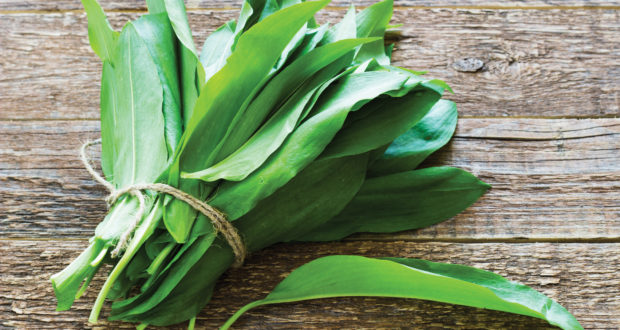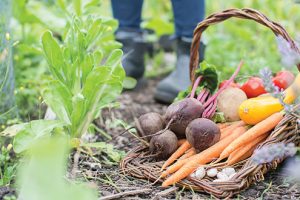His love affair from childhood with wild garlic has since numbed his own nose to its pungent whiff, but Tom Doorley recommends something to help take the edge off this smell
A few years ago, as a phlebotomist withdrew a needle from my arm, a small fountain of blood appeared. Shoving a wad of cotton wool onto the puncture, he asked me if I were on warfarin.

Tom Doorley
“No,” I said. “But I do take garlic every day.”
He looked sceptical, as if he suspected me of being a secret anticoagulant fiend.
Naturally, I consume plenty of fresh garlic because civilised eating is impossible without it. But I also take a daily tablet of kyolic garlic, an aged form of the plant that is considerably less pungent, but stronger than the fresh stuff in the active ingredient, allicin. This became a habit about 20 years ago.
There are still a lot of people who don’t like garlic, probably because it wasn’t part of the bland diet of their childhood. I remember my very adventurous mother buying it in the early 1970s (Heaven knows where she managed to score some) and adding maybe a quarter of a clove to dishes, convinced that anything beyond that would fumigate the house.
At this time of the year, my thoughts turn to garlic, for two reasons. Firstly, the garlic that I planted in early December is well up and looking healthy; secondly, the wild version is making its presence felt.
Rough woodland
The great Hugh Johnson, wine writer and plantsman, once told me about one of his first journalistic assignments: to cover a lecture given by Lady Rothschild to her local Mother’s Union about gardening.
She told her audience of suburban housewives, “no garden, however small, should be without its few acres of rough woodland”.
I was reminded of this when we bought our present abode, which is on a hillside where Cork and Waterford blend together. It came with a garden, right enough, and also, would you believe it, a few acres of woodland — so rough that it was almost uncouth.
At different times, it’s full of bluebells and bright, white wood anemones and startlingly yellow celandines; sometimes the odd bit of holly surfaces, which is handy at Christmas. I don’t think her ladyship would have given it a second glance, but I love it, and it’s productive in the sense that it keeps us in logs for our stoves.
Allium ursinum
When we took it on, it seemed to be completely devoid of the one wild woodland plant that we really wanted: ramsons, or wild garlic — allium ursinum to be precise. This was odd, because it was pretty shady, damp and all of the other things that this plant wants.
Then one day, I found some growing on an ancient midden behind the ruins of the original house. I wonder if it had been used in the kitchen there. Anyway, I transplanted some, ensuring that it got what it likes: damp, shade and acid soil.
When ramsons is in flower, which happens towards the end of March, the air is filled with a strange scent, distinctly garlicky but with a hint of honey. I like it, but I suspect I’m in a minority.
You can use the small bulbs in the same way as the cultivated version, but most people cook it like spinach and have it as a vegetable. Cooked lightly and stirred into creamy mashed spuds is another delicious possibility.
When the tiny white star-shaped flowers come (after which the leaves decline) they can be sprinkled into salads, where they look very pretty and add a faint whiff of garlic.
In 1963, Ireland’s first television cook, Monica Sheridan, wrote: “Thirty years ago [in the 1930s], garlic was in daily use in kitchens all over Ireland… In our house in the country, they put it into the food — and into the whiskey.
“Toothache, tonsils, stomach ache, and all other internal complaints were doctored with the same medicine — two or three cloves of garlic crushed, and wet with half a glass of whiskey. This was poured down the patient’s throat without a by-your-leave. It was a nauseating brew, enough to put anyone off whiskey for life.”
That surely was wild garlic. It’s hard to imagine those big white bulbs, which we associate with the Mediterranean, being dried in cottage kitchens in Ireland. No, I reckon people just went out and dug up the wild stuff as it was needed.
So, there you are. Eating wild garlic is not new, trendy and fashionable at all. We’re just reverting to what our ancestors did.
The edge
However, they are unlikely to have paired such an assertive flavour with wine, and this is where we have the edge. My suggestion for a partner to celebrate garlic is, naturally, Mediterranean, and also suited to this cold, wet and windy time of the year: Minervois, the shamefully underrated red.
I recommend Minervois L’Amourier 2015 (€15.95, winesdirect.ie online and at Arnotts) from one of the great producers, Luc Lapeyre.
This is Grenache, Syrah and Mourvedre, full of southern sunshine with spicy red fruit and rounded tannins. Lift the lid from the casserole and inhale the aroma. Then stick your nose into scent of the garrigue and think of summer.
 Irish Medical Times Medical News for Healthcare Professionals
Irish Medical Times Medical News for Healthcare Professionals






